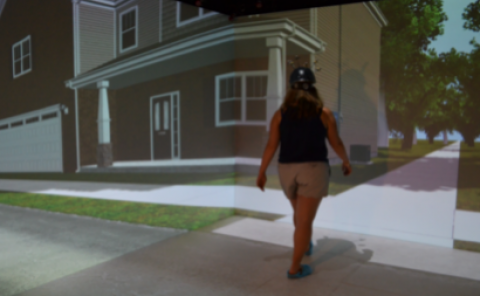Dynamic Density-based Redirected Walking Towards Multi-user Virtual Environments
PubDate: May 2021
Teams: Zhejiang University of Technology
Writers: Tianyang Dong; Yue Shen; Tieqi Gao; Jing Fan
PDF: Dynamic Density-based Redirected Walking Towards Multi-user Virtual Environments

Abstract
With more attention being paid to large scale virtual environments, the demand for more users to collaborate in the same physical space is growing rapidly. Due to the complex collision problem caused by the limitation of physical space, the multi-user redirected walking methods are devoted to improving the ability of multi-user navigation in large-scale virtual environments by reducing the disturbance of resets. Because the existing multi-user redirected walking methods do not consider the density of users in the physical space, there are more boundary conflicts in the real walking for the multi-user virtual environment. In order to decrease the boundary conflicts, this paper presents a novel method of dynamic density-based redirected walking towards multi-user virtual environments. This method dynamically adjusts the user distribution to a state with high center density and low boundary density through the density force, which is generated by the density difference between standard density and actual density. In our method, the users in high-density areas are guided by a repulsive force away from the central area while the users in low-density areas are guided by the gravitational forces towards the central area. Our method can select a double-density optimal gravitational point as the turning target, so all users can move to the area of minimum density to make better use of the whole physical space. Our method also adopts the artificial potential field (APF) forces to prevent user collisions caused by usergathering. The users are guided to move in the direction of the resultant force vector of density force, gravitational force and APF force. In addition, this paper introduces a matching resetting method to further adjust the density distribution while dealing with user conflicts. The results of experiments show that our method successfully reduces the potential conflicts about 30% on average compared with the existing reactive multi-user redirection algorithms. Especially as the number of users increases, our method can avoid more boundary conflicts by using the adjustment of density.



